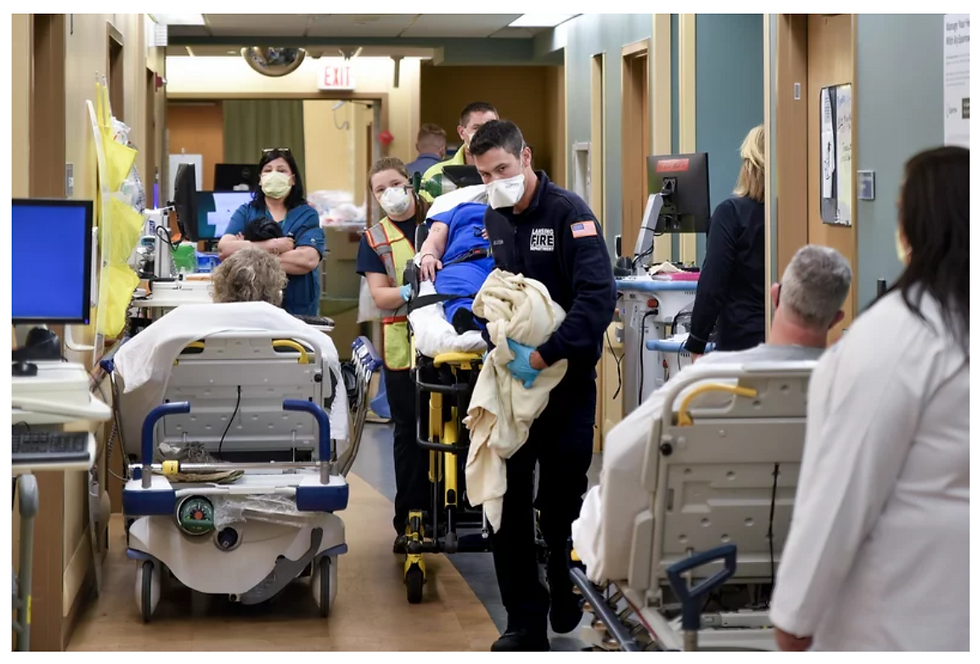The Key Questions for the AHRQ Systematic Review
- Joe Ebberwein

- Apr 4, 2017
- 3 min read
Updated: Mar 30, 2021
The Agency for Healthcare Research and Quality (AHRQ), a division of the Health and Human Services Department recently published in the Federal Register a call for more research-based evidence concerning the efficacy of telehealth in the management of patients with chronic and acute illnesses. The agency is looking for “scientific information submissions” that go beyond the current base of published literature now being used for its review on Telehealth for Acute and Chronic Care Consultations, an effort led by the AHRQ’s Evidence-based Practice Centers (EPC) program.
The AHRQ is specifically calling for evidence of clinical and economic outcomes, as well as any negative effects and whether those results apply across different provider care settings. Previously, the AHRQ has voiced mixed opinions on telehealth and telemedicine. A report issued last year indicated that the AHRQ sees the value of the technology in helping people with chronic diseases, but indicated that there hasn’t been enough current research validation to allow legislation to be developed.
“The request for a systematic review of ‘the growing body of evidence demonstrating the value of telehealth technologies’ is rooted in a belief that telehealth has the potential to produce positive benefits, a desire to promote the effective use of telehealth, and motivation to remove barriers to its use,” the AHRQ detailed in its report.
Key Questions for the Systematic Review
1.) Are telehealth consultations effective in improving clinical and economic outcomes?
Telehealth consultations can be for any acute or chronic clinical condition across any specialty ranging from infectious disease to psychiatry.
Clinical and economic outcomes may include, but are not limited to, mortality and morbidity, utilization of health services, cost of services, and access to services.
2.) Are telehealth consultations effective in improving intermediate outcomes?
Intermediate outcomes include both outcomes that precede the ultimate outcomes of interest and secondary outcomes.
Intermediate outcomes may include, but are not limited to, patient and provider satisfaction, behavior, and decisions (e.g., patient completion of treatment, provider antibiotic stewardship); volume of services; and health care processes (e.g., time to diagnosis or treatment).
3.) Have telehealth consultations resulted in harms, adverse events, or negative unintended consequences?
What are the characteristics of telehealth consultations that have been the subject of comparative studies? The characteristics include:
Clinical conditions addressed. These can include broad categories such as diagnosis and treatment of infectious disease or specific conditions (e.g., upper respiratory infection, hepatitis C, skin infections) or decisions (e.g., stewardship of antibiotics or antimicrobials, selection of treatments)
Characteristics of the providers and patients involved
Relationships among the providers and patients involved including whether these are new or ongoing relationships
Telehealth modalities and/or methods for sharing patient data used
Whether specifics in (d) meet Medicare's coverage and HIPAA requirements
Settings including:
Type of health care organization including the organizational structure (e.g., integrated delivery system, critical access) and the type of care (e.g., long-term care, inpatient, ambulatory care)
Country
Geographic and economic characteristics such as urban or rural areas, or areas with high vs. low socioeconomic resources
Other circumstances (e.g., appropriate transportation, climate)
Payment models or requirements or limits for payment including
The payer/insurance for the patient (e.g., Medicare, Medicaid, commercial)
Any parameters for payment (e.g., relative value units [RVUs]) or limits on visits
Any eligibility requirements for payment based on patient, provider, setting or context characteristics
Do clinical, economic, intermediate, or negative outcomes (i.e., the outcomes in Key Questions 1, 2, and 3 vary across telehealth consultation characteristics?

At Corstrata, we focus on measurable clinical and financial outcomes as we partner with healthcare organizations including home health agencies, hospices and skilled nursing facilities to provide access to wound experts via telehealth, mobile health, and video technologies. Our previous experience taught us that in addition to providing our clients and their staff with the Corstrata mobile app, we must also assist clients with hardwiring virtual wound management into their processes. Our implementation and training program are customized by client to as determined by an initial provider assessment. That assessment informs us how to effectively and efficiently integrate our services. By doing so, we are able to provide our clients with results – better wound care at a lower cost.
Corstrata utilizes mobile technologies to create access to its board-certified wound care specialists to produce a return on investment for our customers. Corstrata assists providers in the proper assessment of wounds during the completion of the provider specific patient assessment- MDS, OASIS C2, etc. Additionally, we collaborate with providers to develop a wound program that includes evidence-based, best practice wound treatments, staff education, pressure ulcer prevention program, and wound formulary redesign. Corstrata provides wound image and video consults that include accurate identification of the wound type and associated staging, precise wound measurement, and recommended treatment and wound dressing to improve clinical and financial outcomes.





Comments